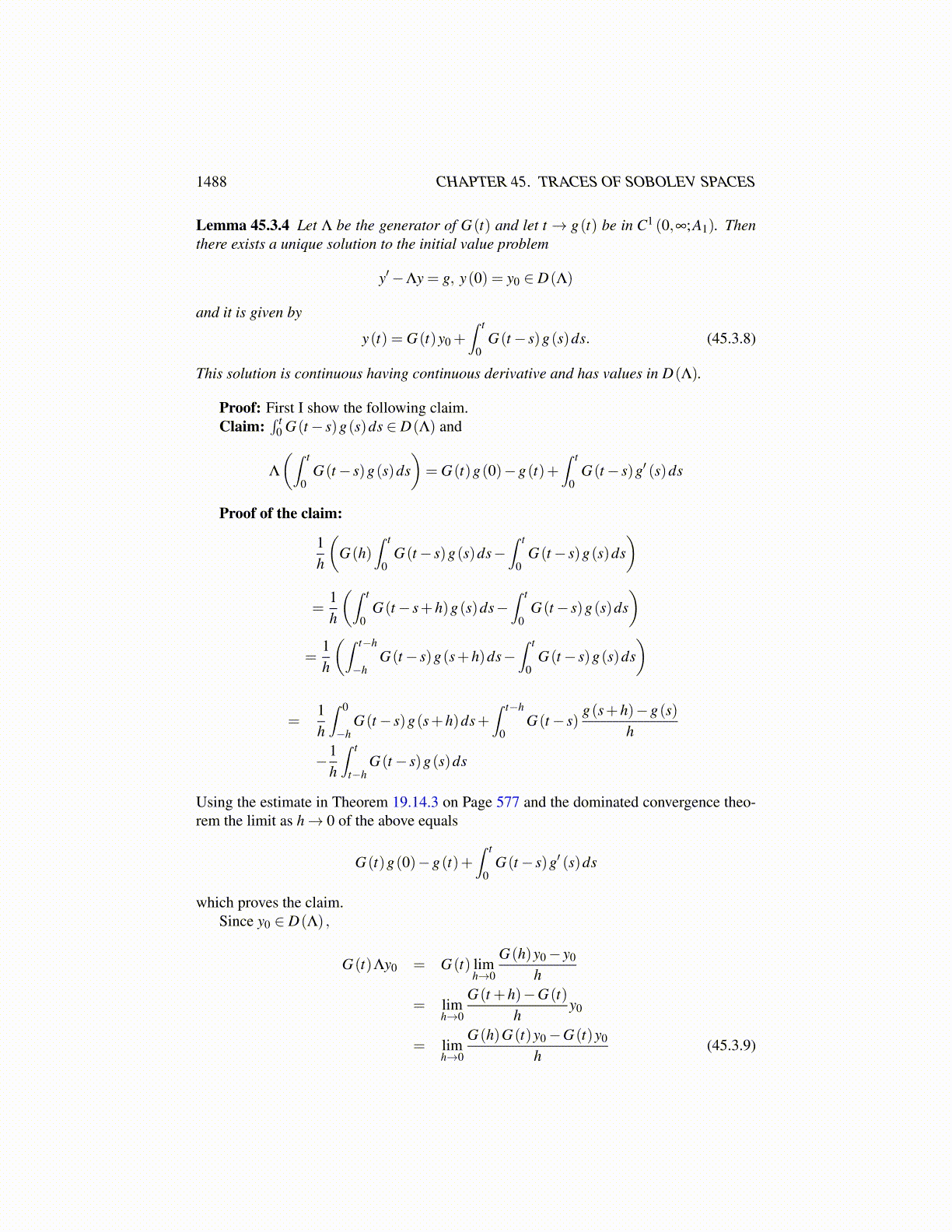
1488 CHAPTER 45. TRACES OF SOBOLEV SPACES
Lemma 45.3.1 Let g = f ∗h where f ∈ L1 (R) ,h ∈ Lp (R) , and f ,h are all Borel measur-able, p≥ 1. Then g ∈ Lp (R) and
||g||Lp(R) ≤ || f ||L1(R) ||h||Lp(R)
Proof: First of all it is good to show g is well defined. Using Minkowski’s inequality(∫ (∫|h(t− s) f (s)|ds
)p
dt)1/p
≤∫ (∫
|h(t− s)|p | f (s)|p dt)1/p
ds
=∫| f (s)|
(∫|h(t− s)|p dt
)1/p
ds
= || f ||L1 ||h||Lp
Therefore, for a.e. t, ∫|h(t− s) f (s)|ds =
∫|h(s) f (t− s)|ds < ∞
and so for all such t the convolution f ∗h(t) makes sense. The above also shows
||g||Lp ≡(∫ ∣∣∣∣∫ f (t− s)h(s)ds
∣∣∣∣p dt)1/p
≤ || f ||L1 ||h||Lp
and this proves the lemma.The following is a very interesting inequality of Hardy Littlewood and Pólya.
Lemma 45.3.2 Let f be a real valued function defined a.e. on [0,∞) and let α ∈ (−∞,1)and
g(t) =1t
∫ t
0f (ξ )dξ (45.3.6)
For 1≤ p < ∞ ∫∞
0tα p |g(t)|p dt
t≤ 1
(1−α)p
∫∞
0tα p | f (t)|p dt
t(45.3.7)
Proof: First it can be assumed the right side of 45.3.7 is finite since otherwise there isnothing to show. Changing the variables letting t = eτ , the above inequality takes the form∫
∞
−∞
eτ pα |g(eτ)|p dτ ≤ 1(1−α)p
∫∞
−∞
eτ pα | f (eτ)|p dτ
Now from the definition of g it follows
g(eτ) = e−τ
∫ eτ
−∞
f (ξ )dξ
= e−τ
∫τ
−∞
f (eσ )eσ dσ